Best Tropical Island Vacations
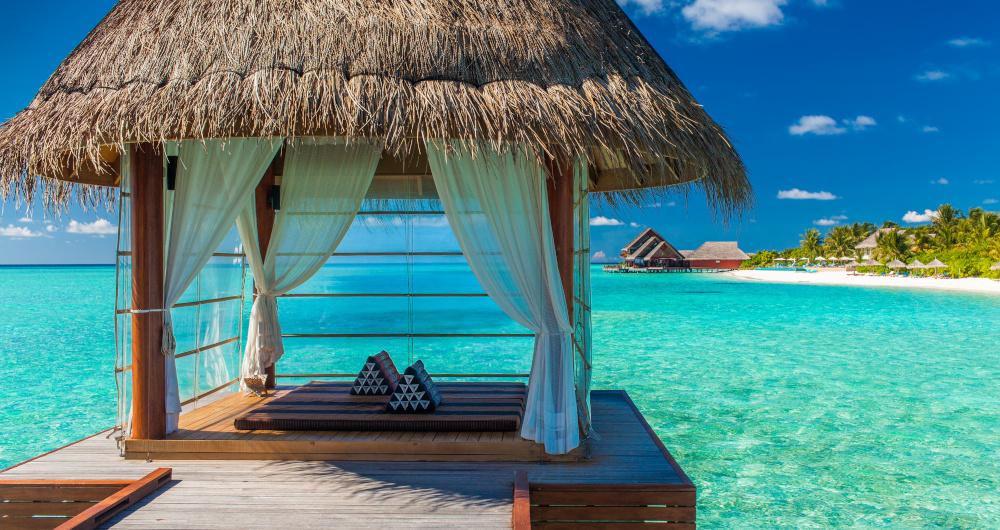
Ready for a warm weather vacation in the tropics? Start packing your bags and get excited to travel to my favorite tropical spots around the world. Why plan a tropical island vacation? Because tropical islands are the ultimate escape, offering sunshine, turquoise waters, and a laid-back atmosphere that feels worlds away from everyday life.
Having explored island destinations near and far, and actually lived in the tropics for 6 years, I’ve found that tropical getaways offer the perfect balance of relaxation, adventure, and natural beauty.
Before I get into the best tropical island vacations, here are the three most important tips from my experience: 1) don't get sunburn on your first day (pack lotion, hats, sunglasses, a rash guard to cover your back during snorkeling, or purchase them as soon as you arrive), 2) pack light (this one seems obvious but people always overpack for the tropics, always!), 3) don't over schedule your itinerary (leave plenty of time for sunsets, naps, and relaxing!).
With that out of the way, let's dive in. So where should you go? Your destination will depend on where you are starting from. Hawaii is amazing if you live on the West Coast, while the Caribbean islands and the Florida Keys are easiest to get to for East Coast travelers. I also like some far away destinations for very special occasions like honeymoons and long vacations (Bali, Bora Bora and the Maldives). Here are the best tropical island vacation I recommend from my own travels, and I hope you’ll enjoy them too.
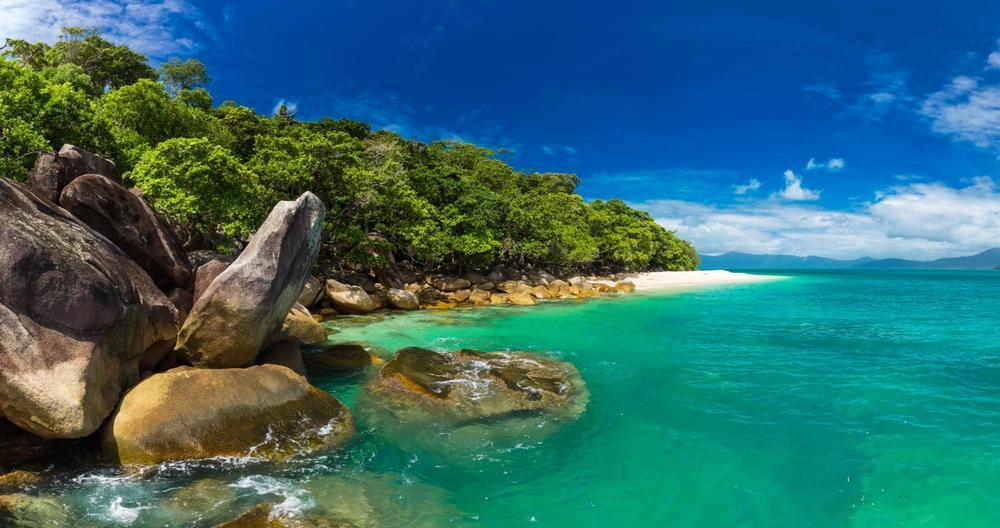
1. Fitzroy Island, Australia
This place quickly became one of my favorite tropical island getaways. Why? First off, I loved that offers a bit of everything—lush rainforest, calm coral beaches, and clear, warm water year-round.
In addition, I honestly think it’s one of the most underrated gems near Cairns, Australia. Just a 45-minute ferry ride from the mainland, you'll find turquoise waters, rainforest, and amazing coral reefs.
The ferry ride itself set the mood—warm air, sparkling water, and that quiet excitement of heading somewhere special together.
We spent the morning snorkeling straight from the beach, drifting over coral gardens and schools of colorful fish on the Great Barrier Reef, sharing wide-eyed looks underwater whenever something especially beautiful swam past.
My favorite part was floating side by side in the calm, clear water, the world above muted and peaceful, as if it were just the two of us and the reef.
Later, we wandered along the rainforest walking trails, where towering palms and dense greenery wrapped around us, and every turn revealed another postcard-perfect view of the ocean below.
We stopped often—sometimes to catch our breath on the uphill climbs, sometimes just to take in the view—laughing, sweaty, and completely content.
Lunch was simple but perfect: fresh seafood near the shore, salty air in our hair, and bare feet in the sand as waves rolled in nearby.
In the afternoon, we stretched out on the beach, letting the sun warm our skin while the water shimmered impossibly blue in front of us. It felt quiet, intimate, and wonderfully unhurried.
As the day slowed, we watched the light change over the water, the sky softening into pale blues and golds as the island settled into evening.
We stayed at the island resort for four days and loved the easygoing vibe. It wasn’t over-the-top luxury, but it was comfortable, affordable, and perfect for either a romantic getaway or a family trip. I especially enjoyed waking up to the sound of waves and walking right onto the beach.
This island is the best tropical island vacation I’ve had in Australia, and I’d go back in a heartbeat.
One downside for me was the limited dining options. You can basically get food at the cafe, grocery store and the resort restaurant.
Best Caribbean Tropical Island Vacations
Incredibly diverse and both family-friendly and romantic, the Caribbean is my go-to spot when I'm based on the East Coast.
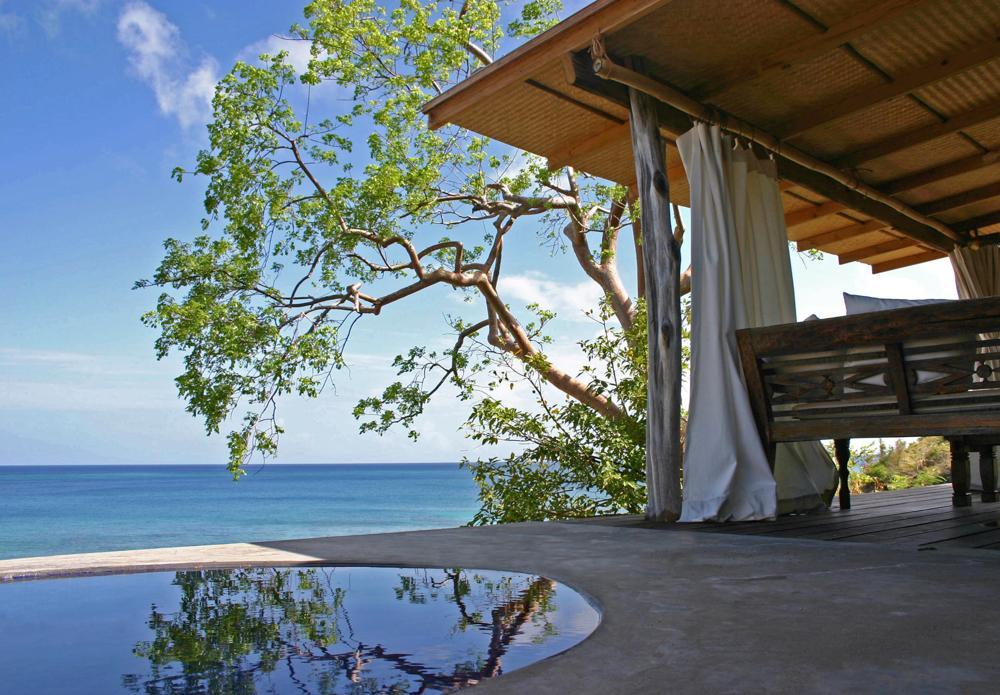
2. Laluna, Grenada
Ready for a romantic tropical island escape? When I think about a dreamy Caribbean honeymoon, this place instantly comes to mind. Nestled on the southern tip of the island near St. George’s, this hidden gem feels like the absolute best escape for couples seeking romance and tranquility.
We drove about twenty minutes south from St. George’s, winding along coastal roads where the Caribbean flashed between palms and hillsides.
I loved how intimate and unusual it felt the moment we arrived. With just sixteen cottages scattered along a hillside, it had that unique “private paradise” vibe that’s so rare and special. Every corner seemed filled with magic—the lush tropical gardens, the vibrant colors, and the quiet charm of the beach just steps away.
We found ourselves drawn to the infinity pool overlooking the Caribbean Sea for two hours at a time and it was one of the coolest spots to watch the sunset. The whole setting felt like an underrated treasure, a joyful and romantic getaway that still felt authentic and affordable compared to many luxury resorts in the region.
My favorite part was the open-air design of our villa for four days. We had a private plunge pool, rustic wooden accents, and sweeping ocean views that made waking up each morning spectacular. It felt like the best balance of casual Caribbean spirit and chic Italian design, which made it so unusual and exciting.
We spent our days kayaking for 3 hours along the calm waters, and enjoying fresh, locally inspired cuisine that made every dinner feel like a celebration. The atmosphere was so vibrant and yet so relaxing, it felt like Laluna had unlocked the secret to the perfect honeymoon retreat.
If you ask me, Laluna is one of the most amazing and romantic places you could ever choose in the Caribbean, a hidden gem that makes every moment unforgettable.
To book, check availability or prices for the 4-star Laluna
My highlight were the lush tropical gardens at the hotel and I loved going out for 30-minute walks during our stay.

3. Cap Maison, St. Lucia
Chris and I both absolutely love St. Lucia, and have been many times. I thought that this was one of the best tropical Caribbean honeymoon vacations. Set on a cliff at the northern tip of the island near Rodney Bay, the resort has the most breathtaking views of the Caribbean Sea, and every sunset feels like a dream painted just for you.
The first time we visited St. Lucia, I was completely taken aback by how dramatic and lush the island is. From the moment we landed, it felt like we had stepped into a tropical postcard. Towering green mountains rise straight out of the sea, waterfalls spill through the rainforest, and the air smells like salt and flowers. It’s the kind of place that immediately slows you down and makes you want to soak in every moment.
St. Lucia is part of the eastern Caribbean, but it feels distinct from many of its neighbors. What makes it so special is its volcanic landscape, especially the iconic Pitons, twin peaks that dominate the island’s western coast. While many Caribbean islands are known mainly for beaches, St. Lucia offers a perfect mix of beaches, jungle adventures, and charming towns, giving it a much more diverse feel.
What I really love about St. Lucia is how much there is to do within a relatively small area. You can spend the morning relaxing on a beach, hike through the rainforest in the afternoon, and watch the sunset from a mountain viewpoint all in the same day. While driving distances aren’t long, the winding roads can make travel slower than expected, so it’s best to plan activities by region rather than hopping all over the island in one day.
If you decide to rent a car, be prepared for narrow roads and left-hand driving. That said, the scenery along the way is absolutely stunning. For those who prefer a more relaxed experience, taxis and private drivers are readily available and are a popular option for visitors who don’t want the stress of navigating on their own.
Another fantastic way to experience St. Lucia is with an organized tour. We found tours to be the easiest way to see the island’s highlights without worrying about logistics. Guided tours are especially helpful here because local guides know the best viewpoints, hidden waterfalls, and cultural stops you might otherwise miss.
After a day of exploring, we returned to the resort. I loved the way Cap Maison combined Mediterranean-style charm with the vibrant spirit of St. Lucia. It’s the kind of place where every detail whispers relaxation and magic.
Our suite for four days completely stole my heart, especially the rooftop terrace with its own plunge pool. Floating under the stars in total privacy was the coolest and most unusual highlight of the trip. I thought it was easily one of the best romantic touches I’ve ever experienced at any resort.
You can trust that this resort is very special because it won the “Saint Lucia’s Leading Resort” award from World Travel Awards.
The dining experiences made every evening special. The Cliff at Cap sits right above the water, and enjoying dinner there while listening to the waves was unforgettable. One night we even had champagne delivered to Rock Maison by zipline—a brilliant idea and definitely my favorite memory to share in photos.
Days at the resort were filled with a joyful mix of lounging by the infinity pool, exploring hidden beaches, and sipping wine in their private cellar. For me, Cap Maison is the absolute best choice for a romantic getaway in St. Lucia—unique, exciting, and filled with those magical moments you’ll never want to forget.
To book, check availability or prices for Cap Maison
My personal highlight were the gardens filled with colorful blooms, winding pathways, and little corners that felt private and romantic. I took a good book with me and came back two hours later completely refreshed.
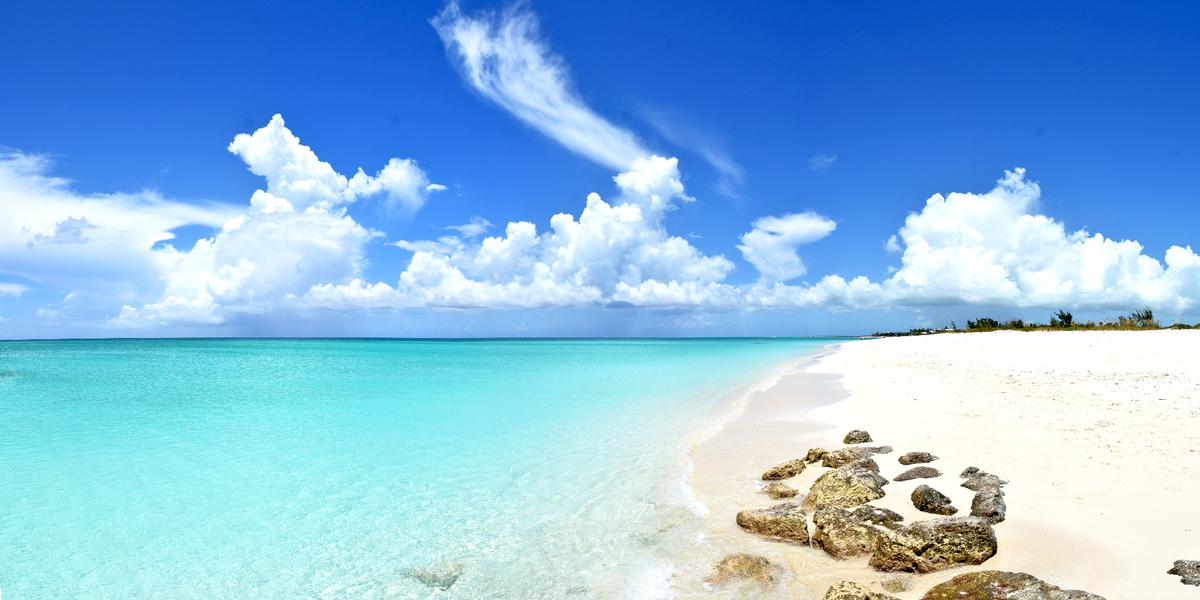
4. Turks and Caicos
This is one of those magical destinations you are supposed to choose for your Caribbean honeymoon, and I think it’s one of the best tropical islands in the Caribbean. Why? First of all, there are the beaches, then add fabulous snorkeling, romantic sunset and all the fresh seafood. It's also easier to get to than other Caribbean islands due to Jetblue's nonstop flights that last under 4 hours from NYC.
Secondly, I Grace Bay Beach completely won me over. It looked like something out of a dream, with powdery white sand and the clearest turquoise water I’ve ever seen, while we strolled hand in hand along the shoreline feeling completely at peace. The All-inclusive adults-only Club Med Turkois is the place to book here (give yourself at least 3 days, 5 if you can!)
We agreed that snorkeling here was absolutely spectacular. I couldn’t believe how vibrant the coral reefs were.
I felt happy every morning waking up to views of the ocean, while we enjoyed long, lazy breakfasts overlooking the beach. That slow and relaxed rhythm was exactly what we needed.
I loved the fresh seafood, especially the conch fritters and grilled lobster, while we both agreed that the local dining scene was an unforgettable part of the trip.
We spent evenings watching fiery sunsets melt into the horizon, and I kept thinking how romantic it all felt, while we shared stories and laughter under the stars.
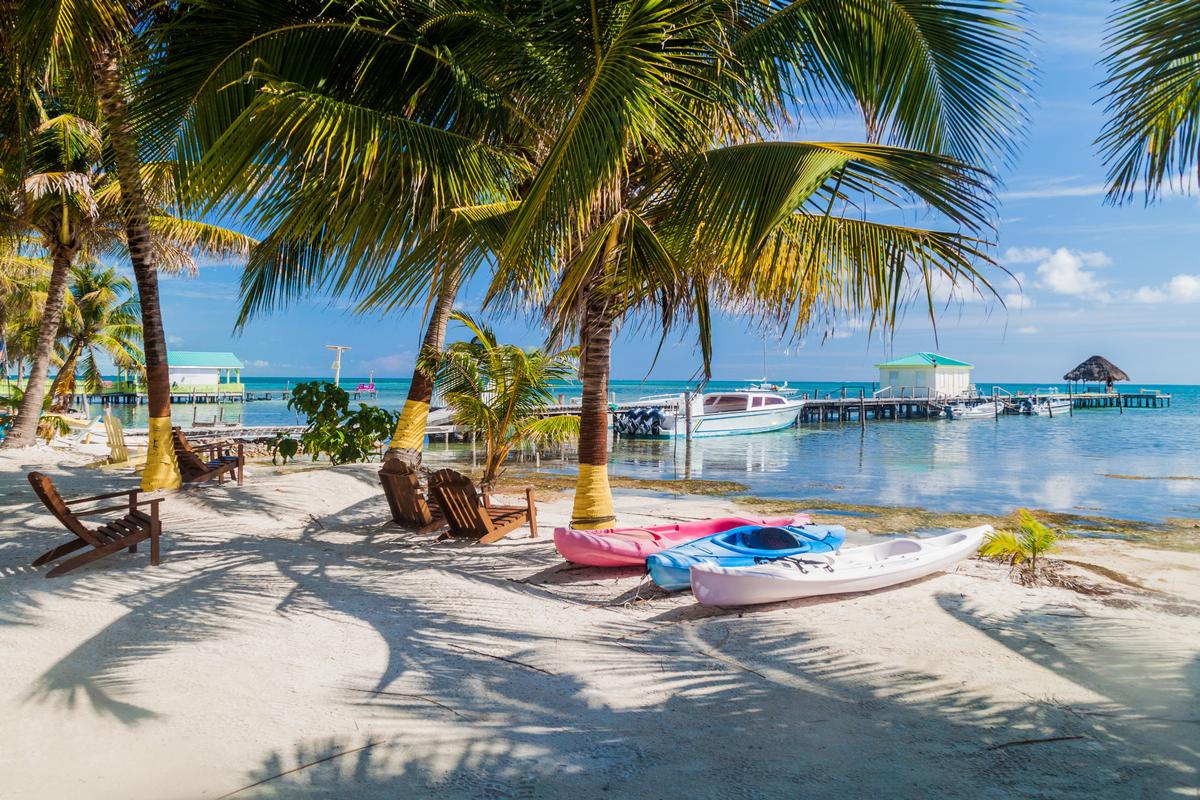
5. Belize
Another one of our favorite places for a tropical island getaway, this is one of the most exciting and underrated tropical destinations, and I honestly felt like it was a hidden gem just waiting to be discovered. A great place to spend four to seven days is 5-star Turtle Inn. It's about 5 hours' flight from NYC to "The Jewel" so staying for a week with give you plenty of time to relax.
As a tourist, I think you'll be happy with this cool mix of adventure and relaxation. You can relax on dreamy Caribbean beaches but did you know that you can also explore ancient Mayan ruins deep in the jungle? This is a fun activity to do that many travelers forget to put on their itinerary!
We thought snorkeling along the Belize Barrier Reef was a must! I couldn’t believe how vibrant the corals were, and we swam side by side with nurse sharks, rays, and colorful fish—it felt magical and unforgettable.
I really enjoyed wandering through the vibrant local towns, while we tasted fry jacks, fresh seafood, and rich Belizean chocolate. We both agreed that the culture here was as joyful and unique as the landscapes.
We also had the coolest time exploring the ATM Cave, where I felt amazed by crystal formations and ancient artifacts. It was one of the most unusual and thrilling adventures I’ve ever had.
What I loved best:
I loved the balance of rustic eco-lodges and romantic island resorts. We stayed in both, and we agreed it made the trip feel like two vacations in one—one adventurous, one purely relaxing.
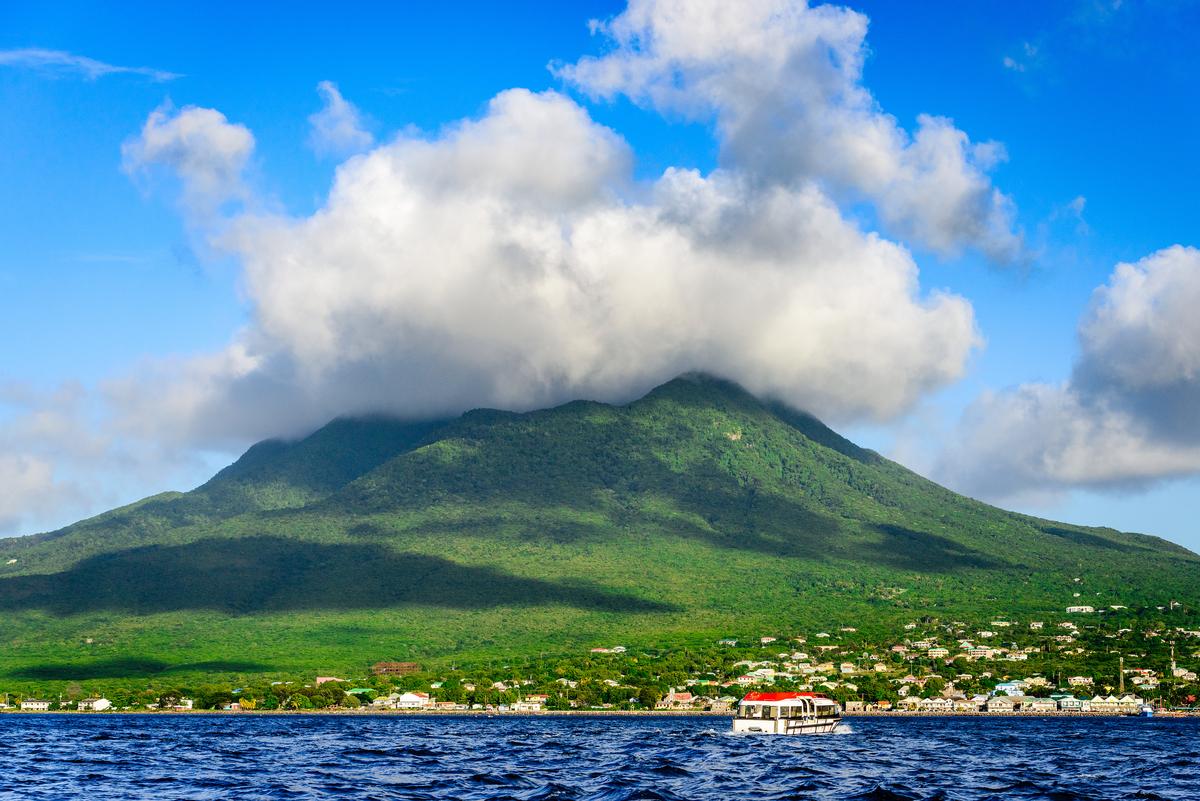
6. Saint Kitts and Nevis
Ready for a trip filled with natural beauty and old-world charm? Check out St. Kitts and Nevis, a real standout! I loved how this place had such vibrant energy, from the bustling capital of Basseterre to the scenic train ride around this tropical island. We both thought it was one of the most unusual and fun ways to see stunning beaches, rolling hills, and old sugar plantations. Flight time is a little shorter than Belize (about 4 hours 15 minutes) if you want less time in the air.
We agreed that Nevis, with its quiet charm, was the absolutely exceptional for romance. I felt joyful walking through the charming streets of Charlestown, while we both loved the laid-back atmosphere and friendly locals who made us feel right at home.
We spent lazy afternoons on Pinney’s Beach (you can stay at 5-star Four Seasons Resort Nevis right nearby), where I felt completely at peace, while we sipped rum punch and watched the waves roll in. It was easily one of our favorite beach days ever.
What I loved best:
I loved the history scattered across both islands, from Brimstone Hill Fortress to old plantation estates. We thought it gave our trip an unusual mix of culture and relaxation, my personal highlight.
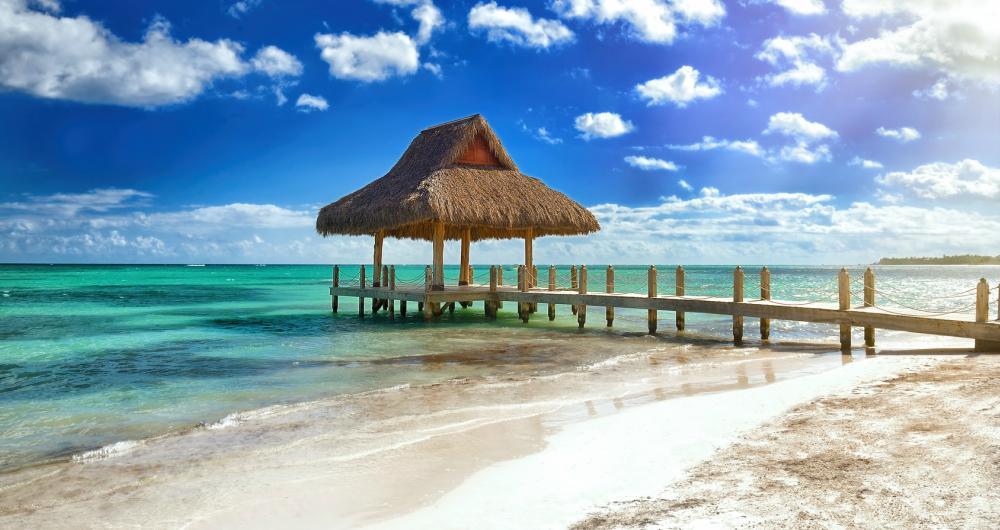
7. Punta Cana, Dominican Republic
Ready for beaches that stretch for miles, with soft white sand and vibrant turquoise waters? We found this to be one of the absolute best tropical getaways, and I honestly felt like it was the perfect mix of relaxation, fun, and romance. We stayed at 5-star Occidental Punta Cana for five days after a 4-hours nonstop flight from NYC.
We both thought Bavaro Beach was spectacular, and walking hand in hand along the shore quickly became one of our favorite daily rituals.
We agreed that the all-inclusive resorts here made everything feel easy (there are many you can choose from but 5-star Barceló Bávaro Palace really stood out). I loved waking up to ocean views, while we enjoyed long breakfasts, poolside cocktails, and endless opportunities for adventure right at our doorstep.
I thought the snorkeling and boat trips were the coolest experiences. We swam together over coral reefs and even found hidden sandbars where the water was so shallow and clear it felt magical.
What I loved best:
We had so much fun exploring beyond the beach too. Don't miss visiting the Indigenous Eyes Ecological Reserve, waterfalls and lush tropical forests, my personal highlight.
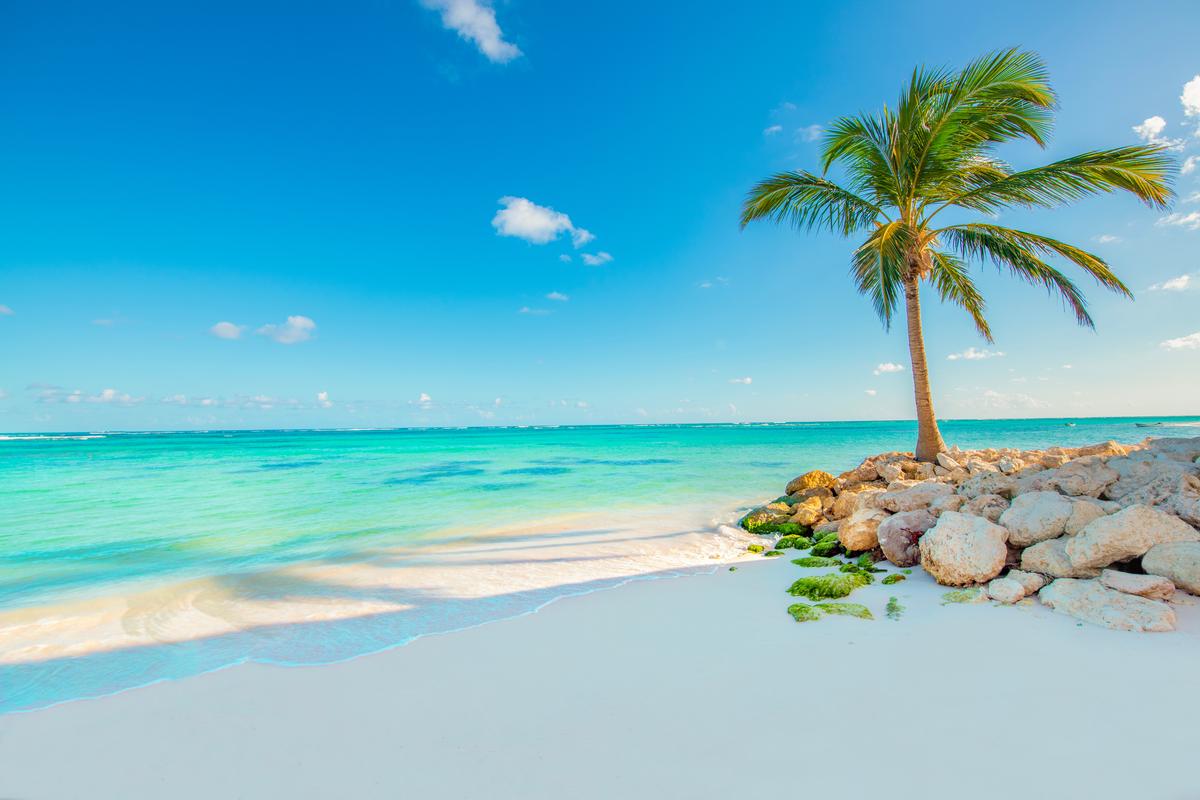
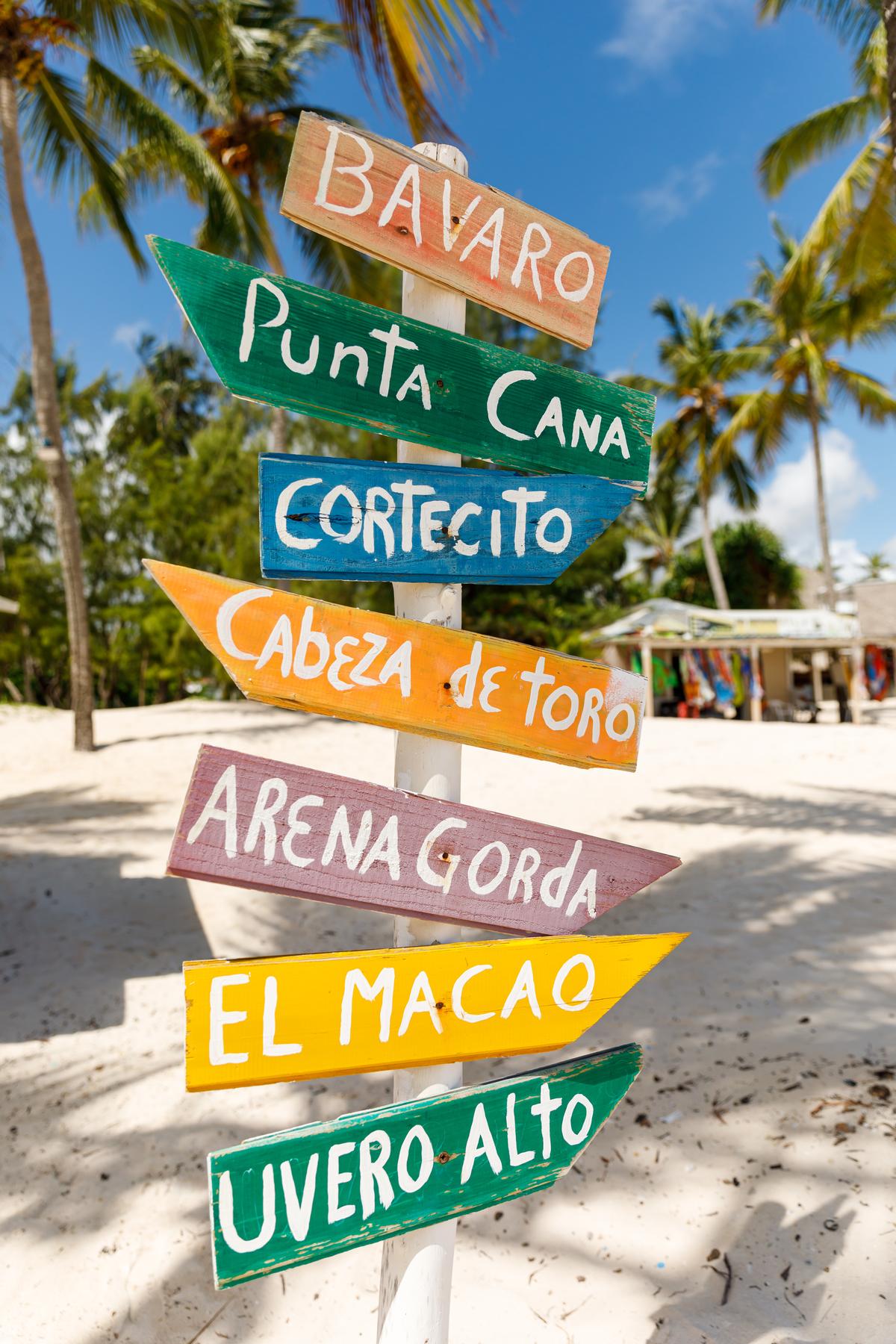
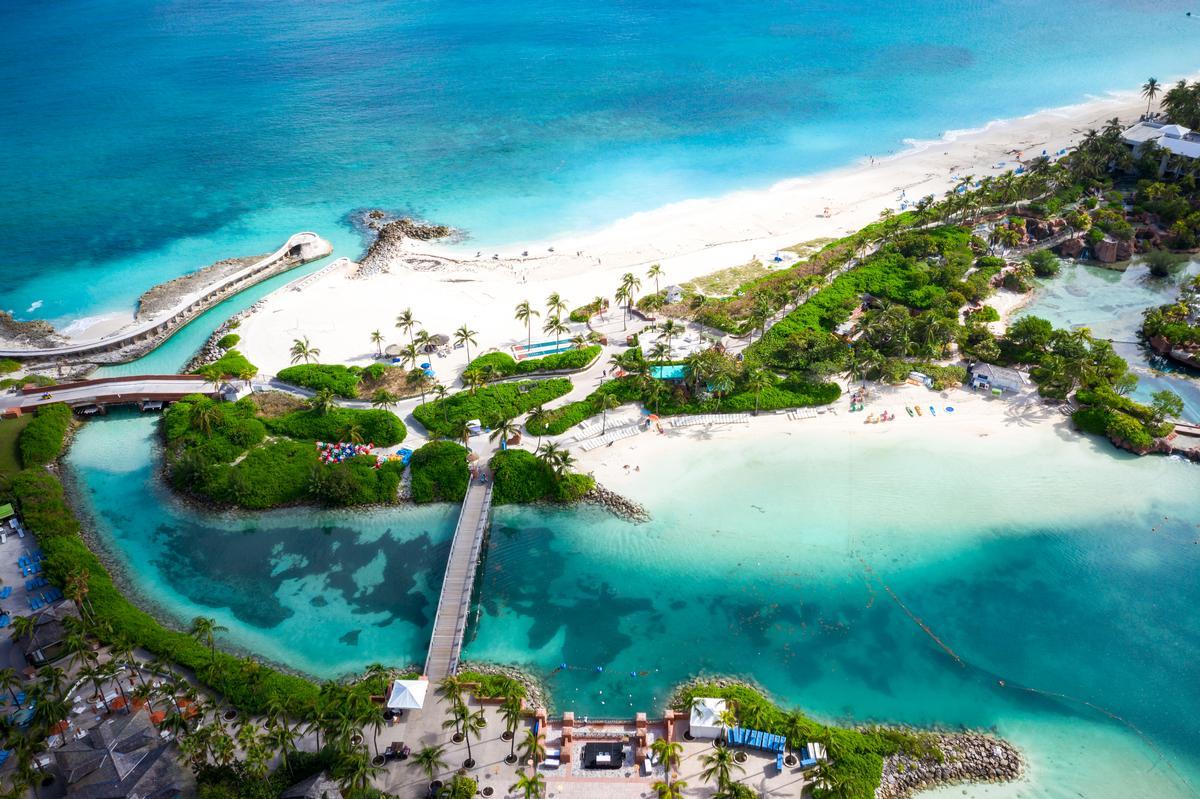
8. Bahamas
Of course I can’t put together a guide about the best tropical islands without including this place, our favorite winter getaway to the tropics when we lived on the East Coast. There’s SO much to see and do, even if you just have a few days in Nassau. But you could spend a full month here getting to know all the islands.
I love that you can get to the Bahamas in just 3 hours by plane from New York, the shortest flight of all the Caribbean spots I visited. You can easily just spend three days and then return to work on Monday. If you are short on time, Atlantis Paradise Island is a great choice because it has so much variety (and a range of accommodation that will please adults and others for families).
If you’re staying on New Providence Island (home to Nassau), renting a car can be helpful if you want to explore beyond the main resort areas. Just a warning through that driving is on the left-hand side. Taxis are also plentiful and convenient if you prefer not to drive.
If you want the absolute best spot to relax and unwind while exercising and making new friends, check out Sivananda Yoga for two days (or more).
If you have a week or longer to spend in the Bahamas, you can check out other islands too. The Bahamas is made up of over 700 islands and cays, though only a small number are inhabited. That’s part of what makes it so appealing — each island has its own personality. Nassau and Paradise Island are lively and convenient, with resorts, restaurants, and history, while places like Exuma, Harbour Island, and Eleuthera feel quieter and more untouched. Whether you’re looking for nightlife or total relaxation, there’s an island that fits perfectly.
We wandered through Nassau’s lively streets from our base at 3-star Courtyard by Marriott Nassau Downtown after landing for two days, and I loved tasting fresh conch fritters at the local stalls. It felt like such a cool and unusual way to experience the culture beyond the beaches.
I found myself completely relaxed watching sunsets, while we shared those moments hand in hand. For me, that was the most romantic part of the entire vacation.
One of the best ways to experience The Bahamas, especially if you’re short on time, is with an organized tour. We’ve found tours here to be an excellent way to see highlights you might not reach on your own, particularly when it comes to island hopping and marine adventures.
What I loved best:
We agreed that these islands gave us the best of everything: adventure, relaxation, and vibrant culture. I would call it a dream destination, and we can’t wait to return to this brilliant island paradise.
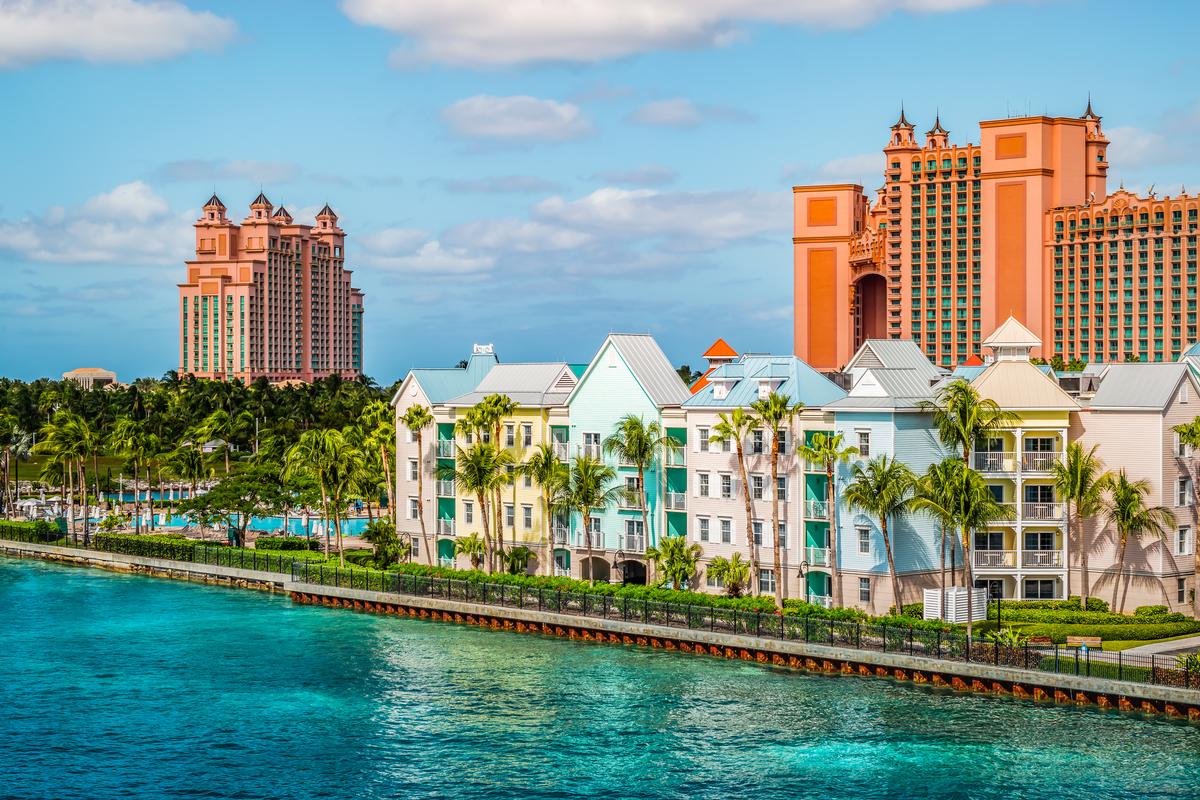
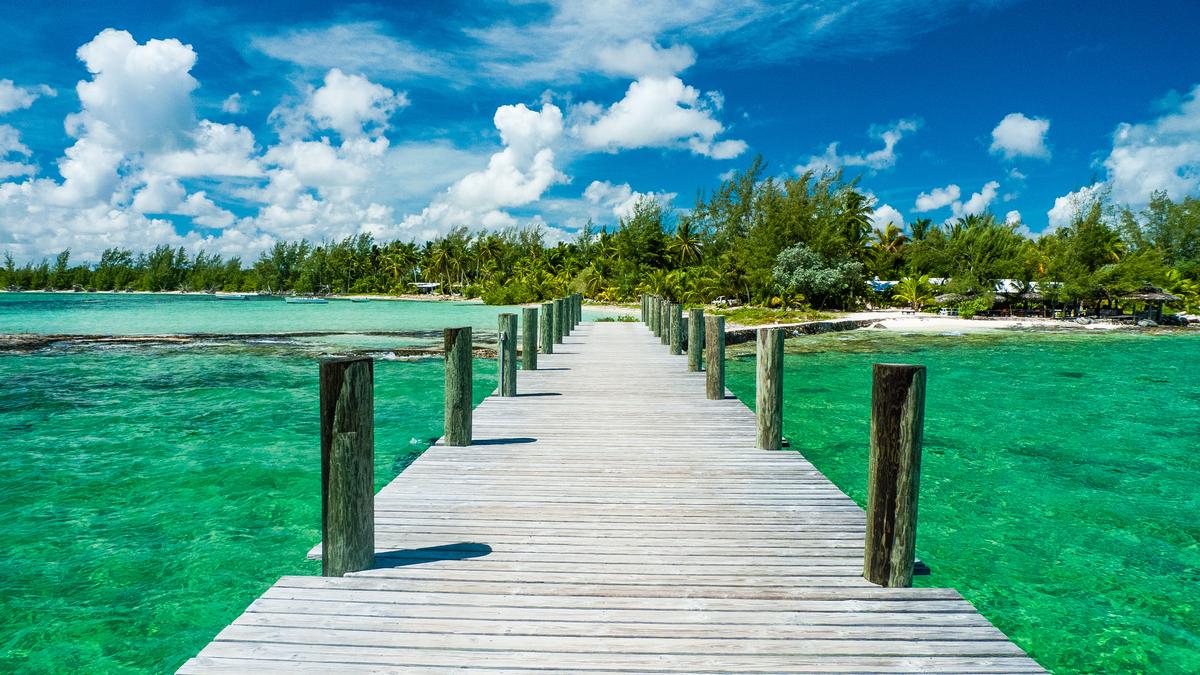

9. Big Island of Hawaii
This island in the USA was so amazing when we visited that we actually ended up moving there. We lived there for 6 amazing years and Chris and I both think it’s one of the coolest tropical getaways in the world. Why? First off, it's in the USA so you don't need a passport! It's less than six hours flight time from LA. Yes, that's still pretty long and can be expensive, but once you arrive it's like stepping through a portal into a new world.
Why the Big Island? I think that all Hawaiian islands have this incredible magic to them, but the Big Island is, well, the biggest, but also most untamed and still growing daily through lava flows in Hawaii Volcanoes National Park (a unique place you simply have to visit!)
We loved that the island had so much variety where in a 3-hour stretch we could walk around tropical fishponds, relax on a black sand beach and enjoy a sunset over the lava. That contrast made my every day feel like a new adventure.
My absolute favorite time was December through March when we could see whales from the coast and launch our kayak (my photo below) to hear them on our hydrophone.
Food on the Big Island of Hawaii was a highlight because there were always fresh avocados, bananas, and papayas. Mango season was shorter than I liked, only about 8 weeks in the summer, but wow, the flavors were totally worth waiting for!
One of my favorite hotels on the Big Island is the Fairmont Orchid which won the AAA Four Diamond luxury resort award so you can trust that it's a high quality place. But whatever you do, get to the beach as early as possible during the holidays because the chairs go quickly.
I also loved staying at 4-star Hilton Waikoloa Village for four days because of the dolphin lagoon and the awesome size of the place.
I also loved snorkeling with sea turtles (sometimes you have to look hard to spot one!) and many fish at Kona’s beaches. We had so much fun remembering the fish that live at a particular reef and then seeing them again on our next snorkel. Many were in pairs which was lovely to see.
I really enjoyed the local culture too. Kona coffee is world famous, eating poke bowls is very tasty, and listening to Hawaiian music in small towns (and big resorts) is wonderful. We both thought it added so much to the experience.
Foodies will find amazing choices, from oceanfront dining at Merriman’s Waimea, a pioneer of Hawaii's farm-to-table movement, to creative island cuisine at Brown’s Beach House, where fresh catch and tropical flavors meet under the stars. For casual eats, try Da Poke Shack for award-winning poke bowls or Island Lava Java for breakfast with Kona coffee and ocean views.
We agreed that this island gave us the best mix of adventure, romance, and relaxation. I felt alive every day we were there, and we both left knowing this was one of our absolute favorite tropical locations yet.
Best Tropical Island Vacations in Costa Rica
I think Costa Rica is an incredible tropical island destination because faces both Caribbean and Pacific coasts, offering two distinct tropical experiences!
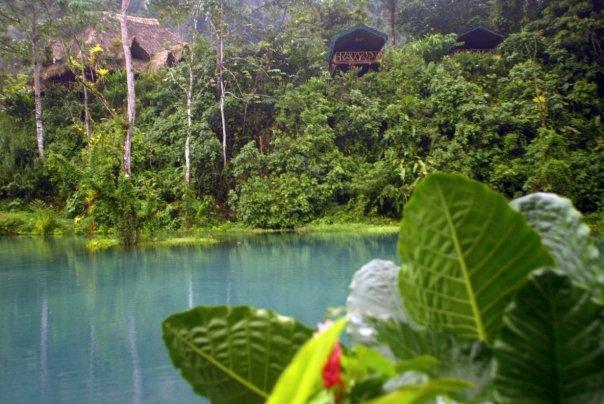
10. Costa Rica: Rafiki Safari Lodge
We started one of our best tropical island vacations flying into Costa Rica, right in Central America near Nicaragua and Panama, where everything instantly felt vibrant and full of magic.
First we picked up our car and drove toward the countryside, and the jungle views, rivers, and small towns already made this experience feel like a hidden gem.
We arrived at Rafiki Safari Lodge Lodge, tucked near the Savegre River close to Manuel Antonio, and it honestly felt like a dream and such an underrated find.
The first thing we did was explore the lodge grounds, walking past palm trees, open spaces, and hearing wildlife everywhere which felt exciting and unique.
Our safari-style tent was spacious and cool, with comfy beds, wooden details, and a deck overlooking the river, easily one of my favorite places we stayed.
That first evening we relaxed by the pool, surrounded by jungle, and it felt romantic, peaceful, and like the absolute best getaway vibe.
Meals were served at the open-air restaurant overlooking the valley. Our meal felt fresh, as if it had come directly from the land around us.
The next morning we woke up early, grabbed breakfast, and watched the mist lift off the river which was pure magic and such a joyful experience.
After that we went rafting on the Savegre River, and it was thrilling, unusual, and honestly one of the coolest things we’ve ever done.
Later we explored nearby beaches closer to Manuel Antonio, and the mix of jungle and ocean felt spectacular and totally amazing.
One afternoon we just slowed down, lounging at the lodge, spotting monkeys, and realizing how special and hidden this place really is.
At night we shared dinner back at Rafiki Safari Lodge, laughing about the day, and it felt like a perfect family or romantic moment.
What I loved best:
The natural pool at the lodge, fed by spring water was exceptional. I watched as butterflies hovered at the water’s edge. It felt like sharing the pool with the nature all around us.
A downside? The lodge’s remote location meant no quick runs into town. Once you arrived, you stayed. It was part of the magic and I thought it was an amazing hidden gem, but it required being ready for the seclusion.
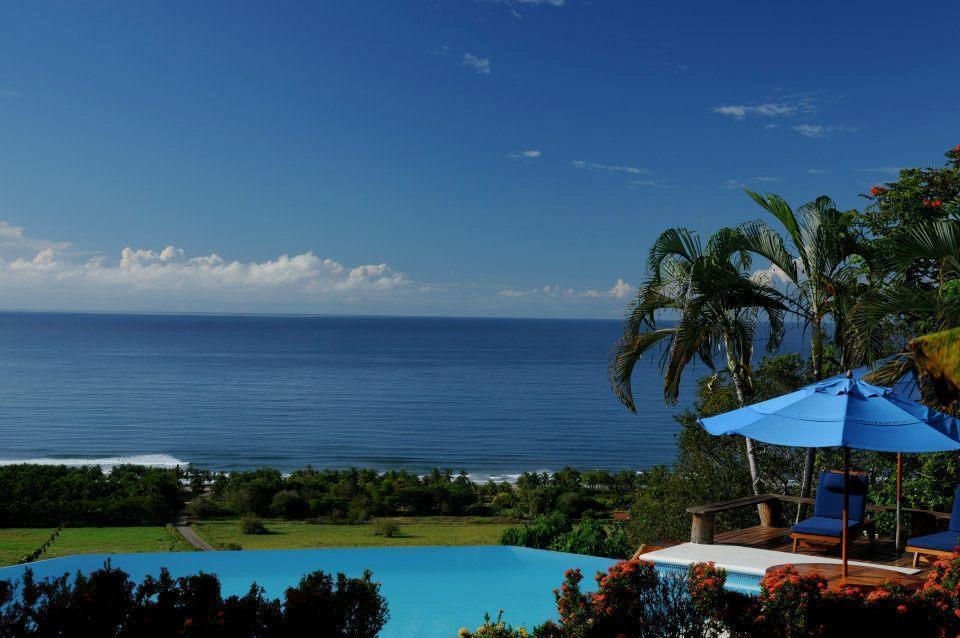
11. Affordable Costa Rica: Cristal Azul Hotel
Another great tropical honeymoon idea (but with a longer, bumpier ride from the airport) is this unique hotel...I think it's worth it, but it's a personal decision.
First, we decided on a shared shuttle, which felt like a brilliant idea because it was affordable, relaxed, and way less stressful than renting a car right away.
Leaving the airport, we watched the city fade into countryside, and the views slowly turned into rolling hills, palm trees, and that dreamy tropical landscape Costa Rica is famous for.
The drive took a few hours, but it never felt boring, it actually felt like an exciting road trip and one of those underrated moments you remember later.
By the time we reached San Miguel on the Nicoya Peninsula, the road narrowed, and Cristal Azul Hotel appeared, perched on a hilltop with a sweeping view of the ocean below.
When we finally pulled in, the ocean views instantly made the whole trip worth it, and it felt like the absolute best welcome.
Cristal Azul sits above the water near Playas del Coco, and the location felt romantic, peaceful.
San Miguel felt wild and untouched, an endless beach below, jungle canopy alive with the calls of howler monkeys, and skies that stretched into forever. The hotel blended into that landscape, more retreat than resort, its open-air spaces inviting the outside in.
Soon after we checked in, I enjoyed the infinity pool, cut into the hillside with the ocean beyond. Hummingbirds darted through the gardens, and the only sound was the surf below. It felt like a private corner of the world.
At the end of the day, dining on the open-air terrace (meals were included with our stay) was unforgettable. Finally, at night, the stars spilled across the sky, brighter than I’d ever seen. The meal itself—fresh-caught fish with lime and herbs, served with plantains—tasted as immediate as the place itself.
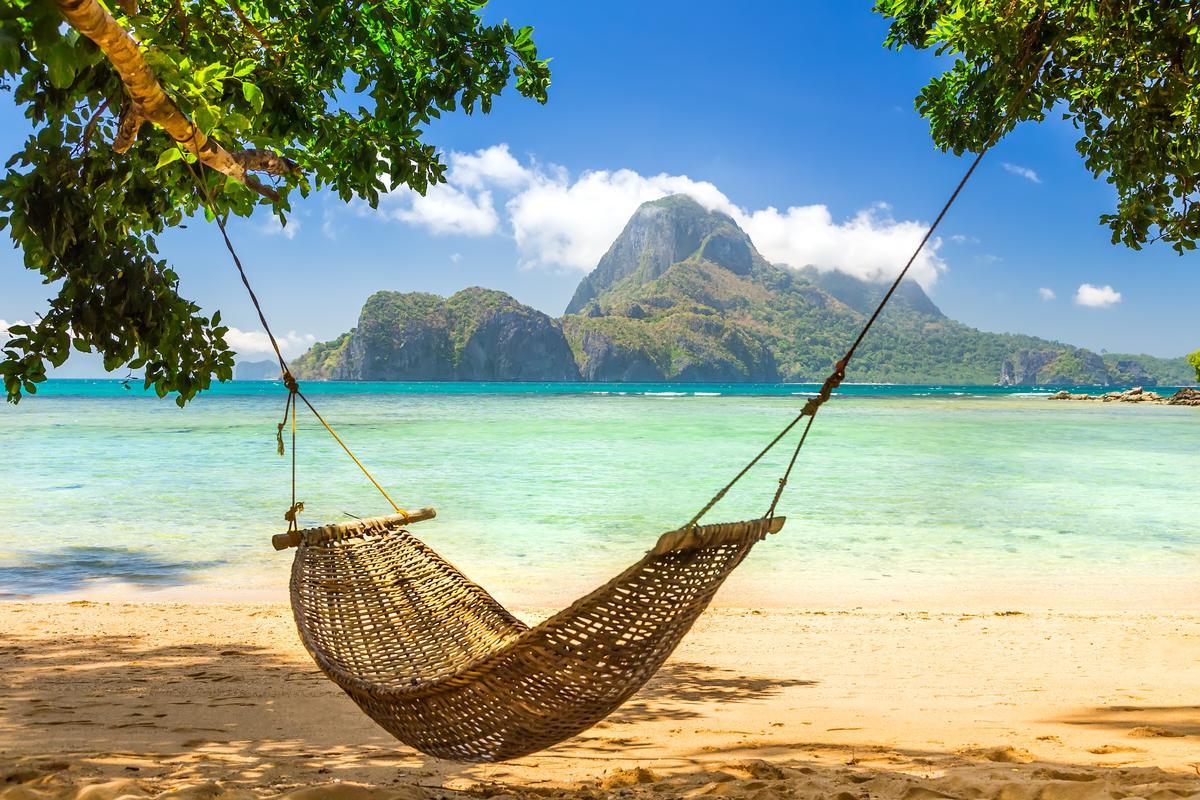
12. Bali, Indonesia
Ready to take a trip somewhere remote and exotic? A 20 - hour flight from LA takes you to Bali, one of the best tropical island vacations. My favorite part? Yes, you'll be spending quite a bit on airfare, but once you get there you can stay at incredible resorts and villas with pools quite cheaply. That's why I recommend at least a week in Bali, two if you can. I loved how Bali offers such a unique blend of culture, nature, and relaxation. While we lounged on hidden beaches, we also explored ancient temples and lively markets that made Bali feel both romantic and alive.
We agreed that Ubud was the absolute best for its serene rice terraces and spiritual vibe. I felt so peaceful wandering through the lush greenery, while we enjoyed yoga classes and traditional Balinese spa treatments that felt like pure joy.
I thought the waterfalls scattered across the island were some of the coolest and most underrated gems. We hiked together to hidden cascades.
We spent evenings in Seminyak staying at the 5-star Seminyak Beach Resort & Spa for three days, watching fiery sunsets over the ocean, and I loved how the beach clubs mixed lively energy with a romantic backdrop. It quickly became one of our favorite ways to end the day.
I really enjoyed the flavorful local food—from nasi goreng to fresh satay, while we both agreed that every meal was a delicious adventure in itself. Sharing plates in small warungs made us feel like locals.
We loved the vibrant coral reefs around the Gili Islands, and I thought snorkeling there was one of the most magical parts of the trip. Book the 4-star Kuno Villas for at least two days here.
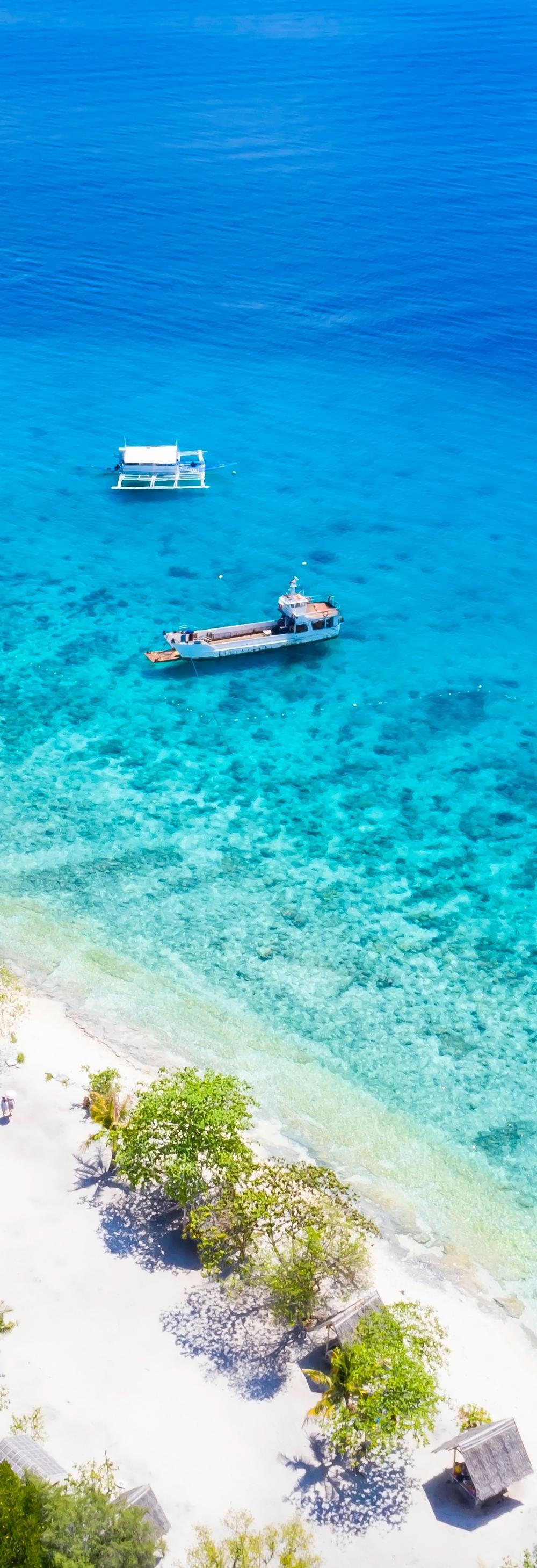

13. Bora Bora
We found this to be one of the best tropical islands in the world, and I felt like I had stepped into a dream the moment our boat pulled up to the overwater bungalows.
I loved waking up to turquoise waters right outside my deck at The St. Regis Bora Bora Resort for four days, while we jumped straight into the lagoon for a morning swim. It was such a unique way to start the day.
We agreed that the scenery was magical...the towering Mount Otemanu, the white-sand beaches, and the coral reefs all around made every moment feel like a postcard come to life.
I thought the snorkeling and diving were the coolest adventures. We swam with rays and colorful fish and it really was an underwater paradise.
We spent afternoons kayaking across calm lagoons, and I found so much peace just drifting on the water, while we laughed and explored hidden corners of the island together.
I couldn’t get over how romantic the sunsets were. We watched the sky explode in shades of pink and gold, and we both agreed it was one of our favorite parts of the trip.
What I loved best:
We enjoyed the mix of luxury and nature—our bungalow had every comfort, but I felt most alive when barefoot on the sand. For us, this place was the perfect balance of relaxation, excitement, and magic.
A downside? As a negative, you should know that this destination takes some work to get to. It's 12 hours 30 minutes from LA and even longer from NYC. I think it's a destination for honeymooners who have a ultra luxury budget and plenty of time (give yourself at least a week or the flight isn't worth it!)
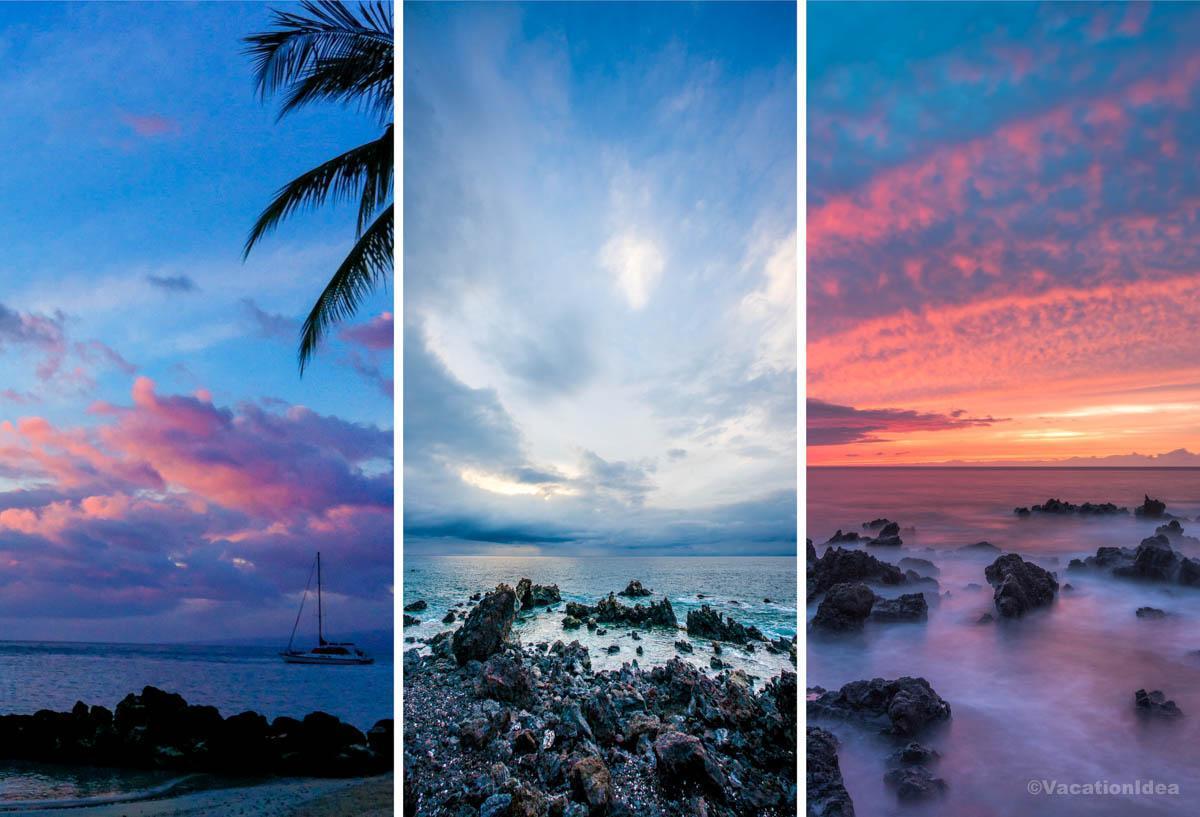
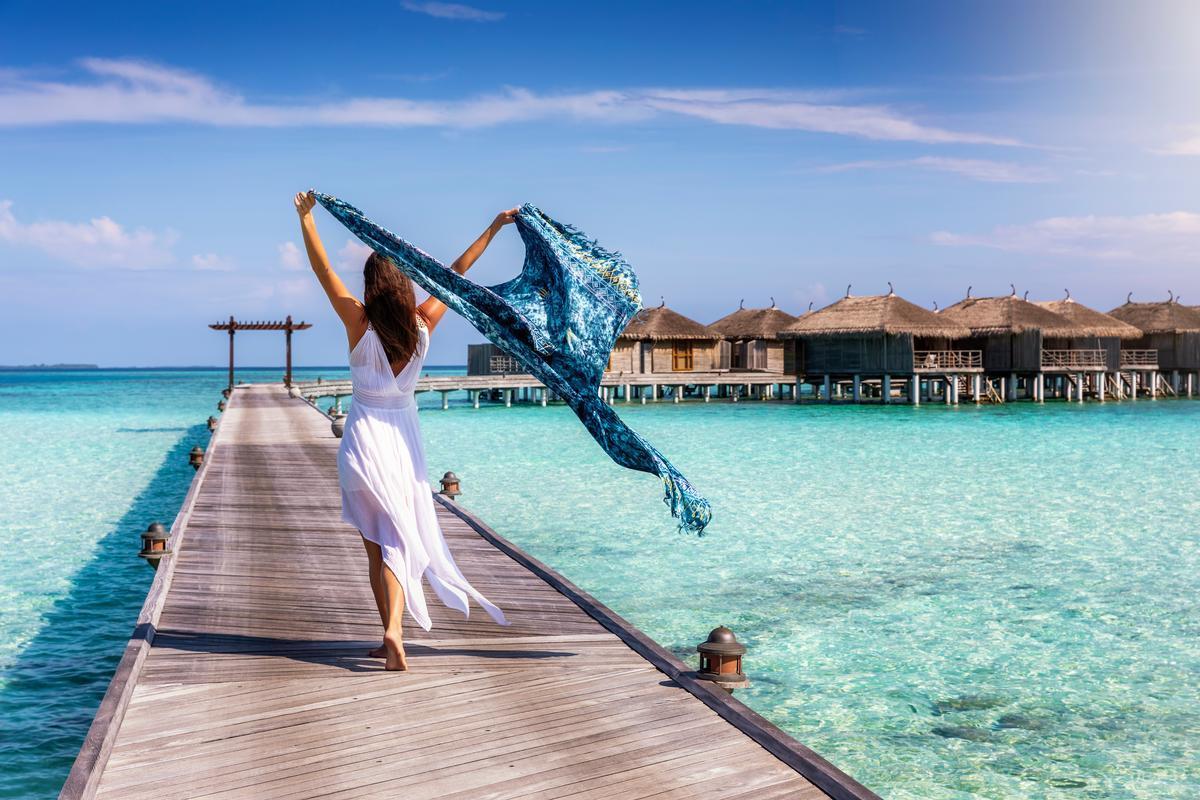
14. Maldives
Without a doubt these islands are one of the most spectacular tropical destinations in the world. Your resort choice will come down to 1) budget, 2) location and 3) amenities that are most important to you.
The first time we visited the Maldives, I was completely taken aback by how unreal it felt. Flying in over endless shades of turquoise and white-sand islands looked more like a screensaver than a real place. I loved watching the modern world fade away as soon as we arrived—no traffic, no noise, just the sound of the ocean and palm trees swaying in the breeze. The Maldives is made up of tiny coral islands, crystal-clear lagoons, vibrant marine life, and some of the most beautiful overwater bungalows in the world. It’s the kind of destination that feels effortlessly luxurious while still being deeply connected to nature.
While the Maldives is often thought of as a single destination, it’s actually a country made up of over 1,000 tropical islands grouped into atolls. Most visitors stay on either private resort islands or local inhabited islands, and the experience can be very different depending on which you choose. Resort islands offer total privacy and all-inclusive luxury, while local islands provide a more cultural and budget-friendly way to experience Maldivian life. No matter where you stay, the beaches are pristine and the water is impossibly clear.
What I really love about the Maldives is how peaceful and relaxing it feels, despite being a world-famous destination. Once you arrive in the capital, Malé, transportation to the islands is handled by speedboat or seaplane, and the journey itself is part of the experience. Watching islands appear and disappear beneath you is unforgettable. Everything runs on “island time,” which makes it an ideal place to truly disconnect and slow down.
Getting around the Maldives is surprisingly easy. Resorts usually arrange transfers for you, which removes all the stress of logistics. If you’re staying on a local island, ferries and speedboats are affordable and reliable, though schedules can be limited. I recommend planning transfers carefully and allowing plenty of buffer time—this is not a destination where you want to rush.
Another excellent and popular way to experience the Maldives is through organized excursions and tours. We’ve found that guided activities are the best way to make the most of your time, especially when it comes to snorkeling, diving, and island hopping. The local guides know exactly where to go for the best reefs and marine life, and it takes all the guesswork out of planning.
If snorkeling with manta rays, swimming with whale sharks, and visiting untouched sandbanks sound like your dream day, a full-day island-hopping and snorkeling tour is an absolute must. These tours typically include equipment, lunch, and expert guides, making them both convenient and great value. The underwater scenery is breathtaking, and every stop feels like a postcard come to life. Tropical sunsets are amazing and local cuisine like the Maldivian curries are exceptional.
A downside? Even more than Bora Bora, though, getting here takes a long time from the USA. If you are starting from Europe, it's a bit better but still very long. The flight from Frankfurt is 10 hours in the air and then you need to get into a speed boat too. I would save a trip here for a longer honeymoon or when you have a large budget and lots of time.
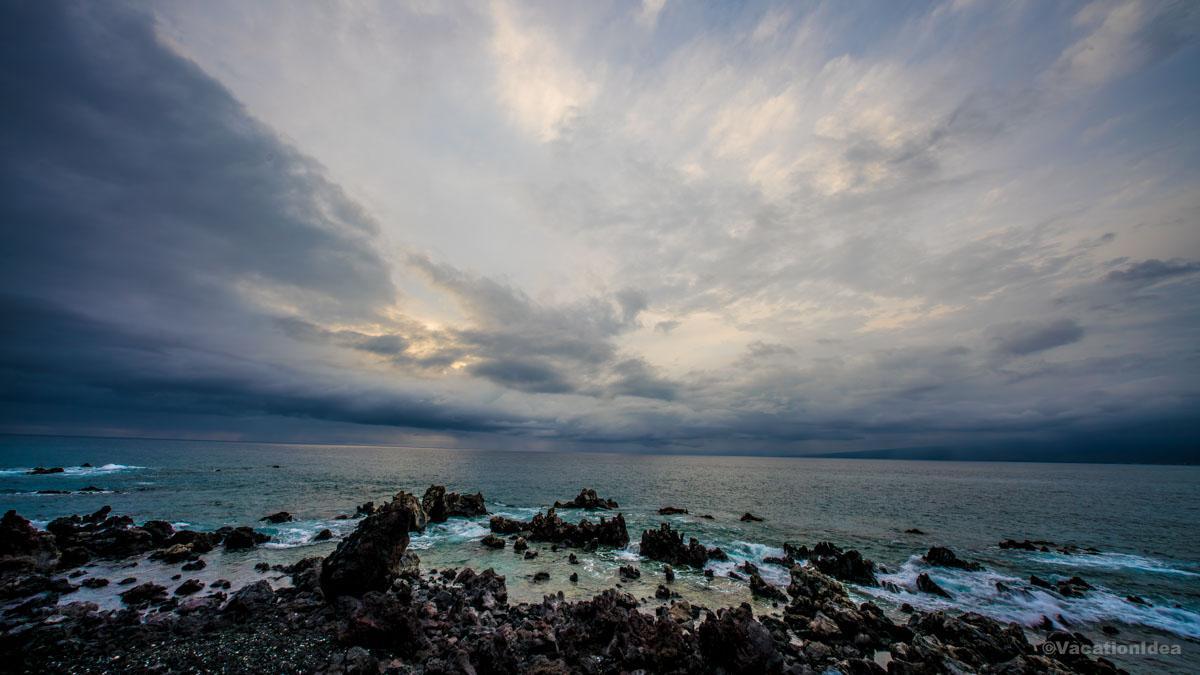
Booking Checklist
1. Book Your Flight - I use Expedia because I like their mobile app with my itinerary. They've helped me re-book flights on many occasions. Once you reach their Gold tier, support is especially good.
2. Book Your Hotel - I use Booking.com or Expedia, depending on my destination.
3. Book Your Rental Car - I use Expedia.
4. Book your tours on Viator or Get Your Guide.
5. If you are planning to visit more than three national parks in the next 12 months, buy the America the Beautiful Pass.
